Design of a Brain-Machine Interface Utilizing Neural Correlates of Prediction Error
Sponsor: TUBITAK ARDEB 1001Project ID: #123E136
Period: 10/2023-10/2026
Our aim in this project is to develop a new brain-machine interface (BMI) that can autonomously calibrate its decoder parameters by utilizing the neural correlates of reward-guided behaviors in the brain. To this end, we plan to develop a new behavioral paradigm that allows rodents to control a cursor on a PC monitor and investigate how unexpected movements of the cursor are encoded in the rodent brain using chronically implantable microelectrode arrays. We believe a self-calibrating BMI can be developed using the neural information which will be obtained in this project.
Design of a Chronically Implantable Microelectrode Array for Measurement of Dopamine Concentration
Sponsor: TUBITAK ARDEB 1003Project ID: #118S072
Period: 12/2018-12/2021
Our goal in this project is to develop a chronically implantable ultraflexible and multichannel microelectrode array which enables the recording of transitions in dopamine concentrations in the striatum with high temporal and spatial resolution and to realize abiotic/biotic characterization of the present microelectrode array using in vivo rat experiments.
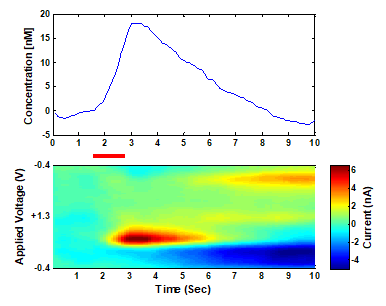
Investigation of the Striatal Dopamine Concentration Modulations During Motor and Neuroprosthetic Skill Learning
Sponsor: TUBITAK ARDEB 3501Project ID: #117E286
Period: 05/2018-06/2021
The aim of this project is to investigate the modulations of dopamine concentration in the striatum while the rodent subjects are interacting with a neuroprosthetic device and develop fine-tuned behavioral setup enabling performance of such tasks for rodents.
Dopamine is necessary for plasticity in the motor cortex and in the striatum, and has a crucial role in motor control and learning. In this project we have just presented an easy-to-implement FSCV device. You may check out TechRxiv.org for the preprint presenting the design and use of the device.
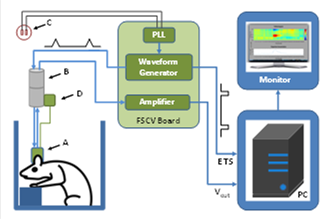
We have just developed a setup fine-tuned for rats to allow them to perform trajectory-based control of a robotic arm based on visual feedback. You may check out the preprint article for the detailed structure of the setup and the behavioral paradigm. The videos in the supplementary materials section demonstrate the rats controlling a neuroprosthetic actuator. This setup can be used as a platform for investigating the changes in dopamine concentration and neural coding during neuroprosthetic control.
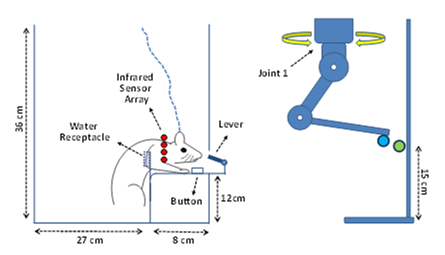
Design of a Biomimetic and Wireless Motor Neuroprosthesis
Sponsor: TUBITAK ARDEB 1001Project ID: #115E257
Period: 10/2015-04/2019
Our goal in this project is to develop a motor neuroprosthetic decoder, which is inspired by the synaptic interactions between the motor cortex and the striatum and a new wireless neural data transmission system to monitor the neural activity in behaving subjects online.
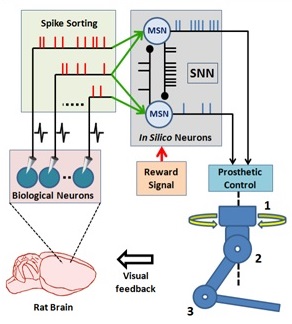
You may check out our article for the detailed structure and performance of the Bioinspired-BMI developed in this project.
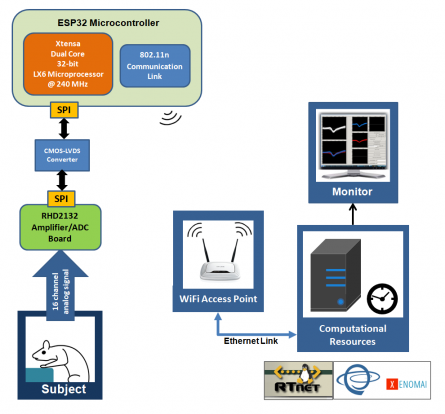
You may check out our proceeding article for the wireles neural data transmission system developed in this project.